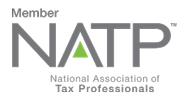by | Feb 11, 2020 | Tax Tips and News
The Internal Revenue Service recently announced that tax relief has once again been expanded for earthquake victims in Puerto Rico. This marks the second such update for areas that can qualify for this relief.
What areas of Puerto Rico qualify for earthquake-related tax relief?
Just three days after Christmas 2019, Puerto Rico was rocked by an earthquake that ultimately led to a FEMA disaster declaration for affected parts of the US territory. While the initial declaration covered six municipalities, the January 22 and February 6 updates have ballooned that number.
According to the IRS, Puerto Ricans in Arecibo, Ciales, Hormigueros, Juana Díaz, Las Marías, Mayagüez, Morovis, Orocovis, and Sabana Grande may now qualify for tax relief. The full list includes 25 municipalities:
Adjuntas | Arecibo | Cabo Rojo | Ciales | Corozal |
Guánica | Guayanilla | Hormigueros | Jayuya | Juana Díaz |
Lajas | Lares | Las Marías | Maricao | Mayagüez |
Morovis | Orocovis | Peñuelas | Ponce | San Germán |
Sabana Grande | San Sebastián | Utuado | Villalba | Yauco |
If any additional municipalities are designated for tax relief, the IRS will issue another update.
How does disaster tax relief help victims?
Taxpayers who qualify for disaster-related tax relief often receive a number of benefits, like getting deadline extensions, claiming disaster-related casualty losses, and deducting personal property losses.
Specific to this earthquake tax relief, the IRS says that “certain deadlines falling on or after December 28,2019 and before April 30, 2020, are granted additional time to file through April 30, 2020.” Here are some of the affected deadlines noted by the IRS:
- Individual income tax return deadlines
- Quarterly estimated income tax payments for January and April
- Quarterly payroll and excise tax returns for January
Generally, victims do not need to contact the IRS to receive disaster-related tax relief, but the IRS says there are exceptions. Taxpayers who were impacted by the earthquake but don’t live in officially announced areas need to call the IRS at 866-562-5227.
Sources: PR-2020-01; FEMA Statement on recent Puerto Rico Earthquakes
– Story provided by TaxingSubjects.com
by | Feb 1, 2020 | Tax Tips and News
The IRS wants more eligible taxpayers to claim the Earned Income Tax Credit
The Internal Revenue Service wants more taxpayers to know about the Earned Income Tax Credit, which is why the agency has coordinated the annual EITC Awareness Day event for more than a decade.
January 31, 2020 marks the fourteenth anniversary of EITC Awareness Day. The IRS used the occasion to highlight taxpayers who might be eligible and online resources for determining EITC eligibility and tracking refund status.
Why is the EITC important?
According to the IRS, “25 million taxpayers received over $61 billion in EITC” last year. When it comes to individual households, receiving the EITC can be a pretty substantial benefit. The IRS says that the EITC can provide “as much as $6,557 for a family with children or up to $529 for taxpayers who do not have a qualifying child.”
To make sure that more taxpayers look into the EITC, the IRS highlighted eight groups they say could qualify but often “overlook this important credit:”
- [Taxpayers] without children
- [Taxpayers] living in non-traditional families, such as a grandparent raising a grandchild
- [Taxpayers] whose earnings declined or whose marital or parental status changed
- [Taxpayers] with limited English language skills
- [Taxpayers] who are members of the armed forces
- [Taxpayers] living in rural areas
- [Taxpayers] who are Native Americans
- [Taxpayers] with disabilities or who provide care for a disabled dependent
The next step, naturally, is actually determining EITC eligibility.
How do I determine EITC eligibility?
The EITC Assistant is a free online resource provided by the IRS. According to the press release, “Taxpayers earning $55,952 or less can see if they qualify using the EITC Assistant tool … [which] helps users determine if they are eligible and if they have a qualifying child or children, and it estimates the amount of the EITC they may get.”
Even if the assistant says they are eligible, the IRS says that taxpayers need to be careful when applying for the EITC. “The EITC rules can be complicated,” the IRS warns. “Errors can have a lasting impact on future eligibility to claim EITC and leave taxpayers with a penalty.”
Tax professionals can help navigate the intricacies of the EITC rules, but the IRS says taxpayers should be suspicious of anyone who promises the maximum EITC payout—especially if their fee is based on a percentage of the refund.
(The Directory of Federal Tax Return Preparers with Credentials and Select Qualifications is a great resource for finding legitimate preparers in your area.)
When will the IRS issue EITC refunds?
The IRS says that refunds for returns claiming the EITC cannot be issued before the middle of February. The delay, triggered by a provision in the PATH Act, is designed to give the IRS more time to identify returns fraudulently filed by identity thieves.
While some early filers may receive refunds on February 22, the IRS says most taxpayers will probably have to wait a few months: “Most EITC- or ACTC-related refunds [will] be available in taxpayer bank accounts or on debit cards by the first week of March, if they choose direct deposit and there are no other issues with their tax return.”
Taxpayers who want to keep a close eye on their refund status can use the “Where’s My Refund?” tool.
Source: IR-2020-22
– Story provided by TaxingSubjects.com







